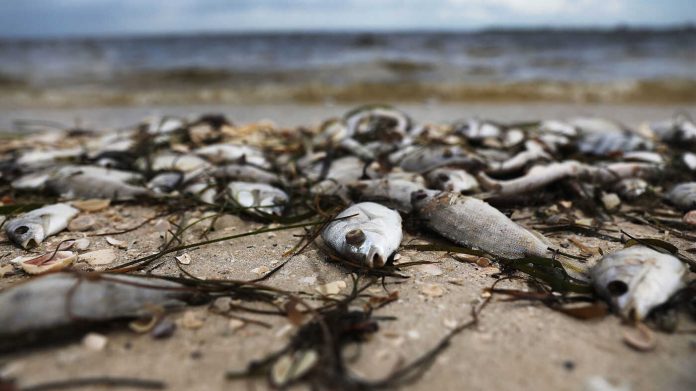Hello Readers!
In this blog we will discuss the red tides which occur in Florida. We will let you know what red tide is, how it occurs, its impact on the environment and several other facts. So read our blog till the end to know all about red tide.
What is Red Tide?
Harmful Algal blooms (HABs) are also known as red tides. When colonies of algae – basic plants that live in the sea and freshwater — grow out of control, they generate toxic or hazardous impacts on people, fish, marine mammals, and birds.
According to the Florida Fish and Wildlife Conservation Commission (FWC), red tides occur when there are too many algae named Karenia Brevis in the water. It pollutes the surrounding area with harmful toxins.
Nearly every summer, one of the country’s most well-known HABs happens along Florida’s Gulf Coast.
Factors Responsible for its Growth
- Agriculture – There are 13 nutrients that can contribute to the growth of red tide. Man-made kinds of nutrients, such as nitrogen or phosphorus, could promote a red tide bloom if they find their way into an estuary system.
- Fish Kill – Algae that causes red tide Karenia Brevis generates brevetoxins, which cause fish to die by affecting their central nervous systems. K. Brevis, on the other hand, can kill fish by diminishing dissolved oxygen in the water. Those dead fish then serve as a source of nutrients, potentially accelerating the bloom.
- Storms and Run off – While runoff isn’t directly responsible for the onset of red tide, it can help to fuel blooms once they’ve arrived near the shore.
- Temperature – The temperature of the air affects the temperature of the water, which might impact water circulation patterns. Blooms are frequently more noticeable to scientists in the cooler months, commencing in late summer or early fall. The blooms then tend to last well into the winter.
- Septic/Wastewater – Sewage, like runoff, does not play a direct role in red tide initiation, but it can fuel red tide blooms after they are transported near shore.
Why a concern?
The red tide outbreak has been an issue on the coast of Florida since 2017.
- The human illnesses caused by HABs are fatal. They produce toxins that kill fish and make shellfish dangerous to eat. Toxins may also make breathing difficult in the surrounding area. Algae blooms frequently make the water red, as the name implies.
- HABs are a national problem because they have an impact on not just human and marine environment health, but also the ‘health’ of local and regional economies.
- Toxins from red tides can spread through the food web, affecting everything from microscopic zooplankton to birds, fish, aquatic animals, and humans.
- Red tides kill a lot of fish along the Florida coast, weaken or kill marine mammals, and cause respiratory distress in people and marine mammals when the toxins are ingested.
- Some of the expenditures associated with these blooms include health care costs from hospital and doctor visits, beach clean-up efforts following fish deaths, and lost tourism profits.
- Red tides cause an estimated $82 million in economic losses each year due to beach and fishing closures, including associated drops in tourism and seafood revenues.
Recent Report on Red tides situation
A devastating so-called “red tide” algae bloom attacked sea life in the region. Piles of dead fish, dolphins, turtles, and manatees were found decaying on the shorelines of coastal Florida in a soup of reddish brown ocean water as of July 2021.
More than 800 tonnes of dead fish and sea life have washed ashore in Pinellas County in Florida, and the smell is already hitting the cities.
Potential Solutions
Red tide forecasts are issued weekly by a group of scientists to let people know how safe a location in Florida (and elsewhere in the Gulf of Mexico) is for recreation. Satellite photos are used in the forecasts to determine the extent and impact of a bloom.
Citizen scientists can now use a new application called HABscope to assist collect data on blooms. The HABscope is a smartphone-attached tiny microscope that allows users to take short videos of water samples obtained from various sites in Florida. Scientists can estimate the risk or severity of a bloom by counting the number of microalgae cells in a water sample.
With this we come to the end of this blog. We covered all the major points related to red tides.
Stay tuned for more such updates!




